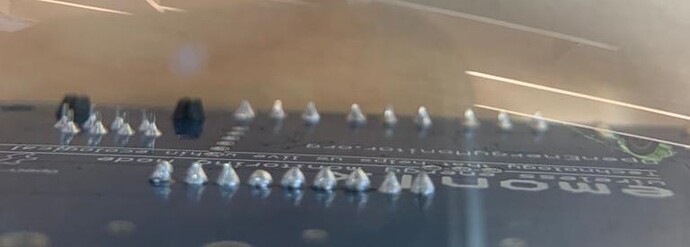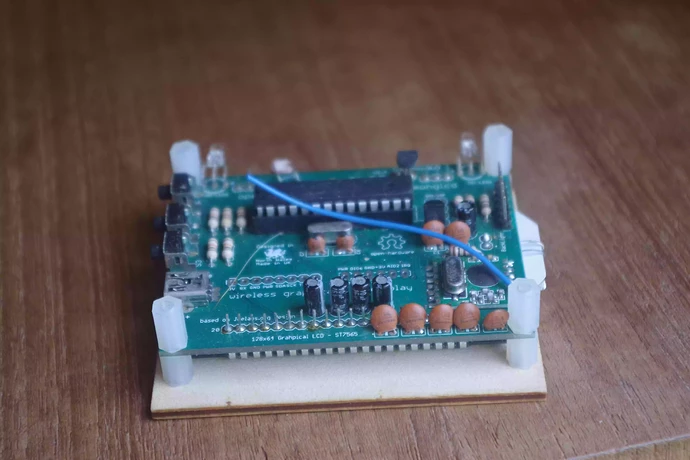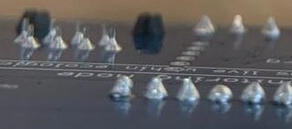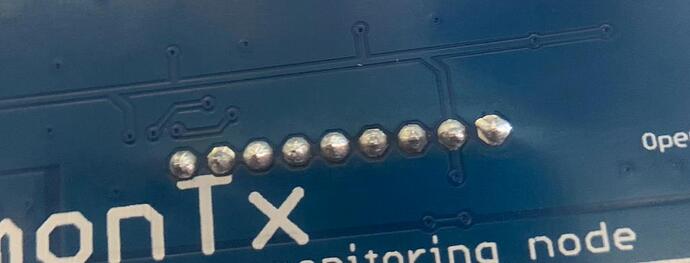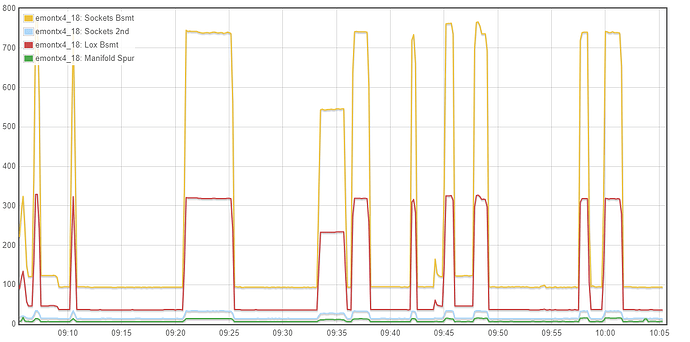Hi Forum
I’ve just upgraded my Tx4 to 12 CT ports. It’s a single phase supply to my house. I managed to follow the instructions to build the firmware and install it ok but I have a few problems all of which may have a single cause possibly/probably/hopefully point 1.
-
The expansion board won’t sit in the connector properly. The pin for CT12 doesn’t seat as far in as the other pins by a couple of millimeters and so the board wobbles over that proud pin.
-
I stop getting data from ports 9-12. They work for a few hours and then stop. As an Example here’s one console output:
Ch 1 I=15.778 W=3615 VA=3793 Wh=488 pf=0.9531
Ch 2 I=0.455 W=-3 VA=109 Wh=-1 pf=-0.0390
Ch 3 I=11.200 W=2691 VA=2693 Wh=70 pf=0.9995
Ch 4 I=0.337 W=37 VA=81 Wh=29 pf=0.4521
Ch 5 I=2.462 W=452 VA=592 Wh=218 pf=0.7632
Ch 6 I=0.298 W=15 VA=72 Wh=13 pf=0.2140
Ch 7 I=0.045 W=2 VA=11 Wh=0 pf=0.2098
Ch 8 I=1.244 W=215 VA=299 Wh=116 pf=0.7201
Ch 9 I=nan W=0 VA=0 Wh=-1 pf=0.0000
Ch 10 I=nan W=0 VA=0 Wh=-1 pf=0.0000
Ch 11 I=nan W=0 VA=0 Wh=-8 pf=0.0000
Ch 12 I=nan W=0 VA=0 Wh=-7 pf=0.0000
or snippet…
Ch 9 I=0.000 W=0 VA=0 Wh=-1 pf=0.0000
Ch 10 I=0.000 W=0 VA=0 Wh=-1 pf=0.0000
Ch 11 I=0.000 W=0 VA=0 Wh=-8 pf=0.0000
Ch 12 I=0.000 W=0 VA=0 Wh=-7 pf=0.0000
3 I’ve read the firmware instructions and read the info on calibration but I’m not sure how to calibrate the hardware or the CT sensors. My reading is that with the EmonVs power supply there is no need for voltage calibration required, I can leave the default values in place. I’m not sure if the CT sensors need calibration or not.
Any help much appreciated to diagnose if I have hardware and/or firmware issues and what to do to solve the problem.

